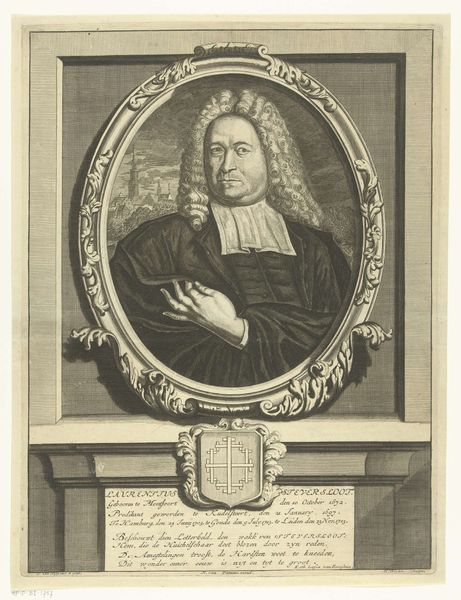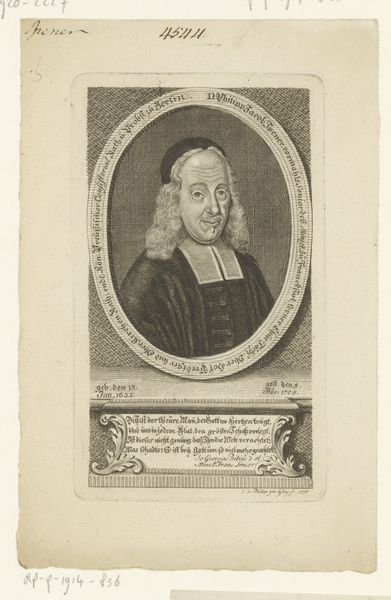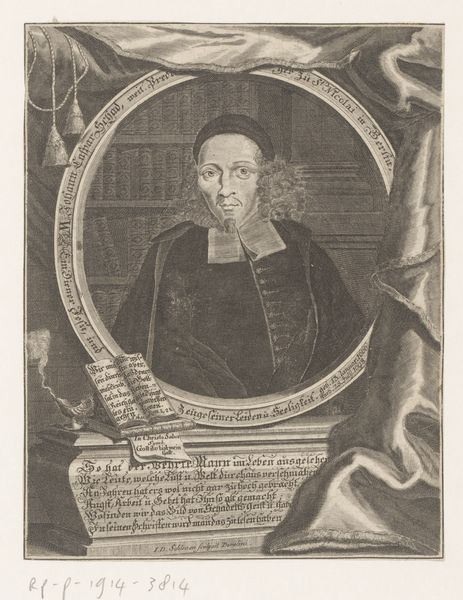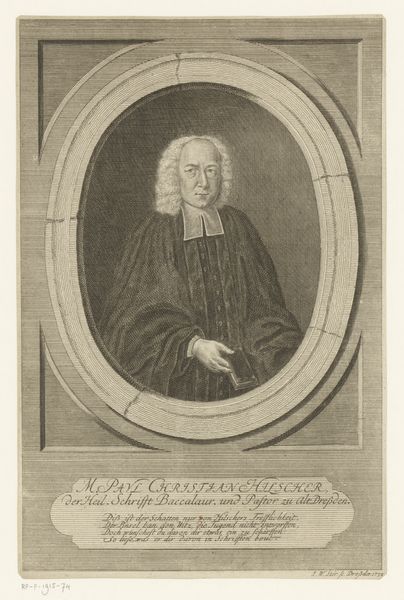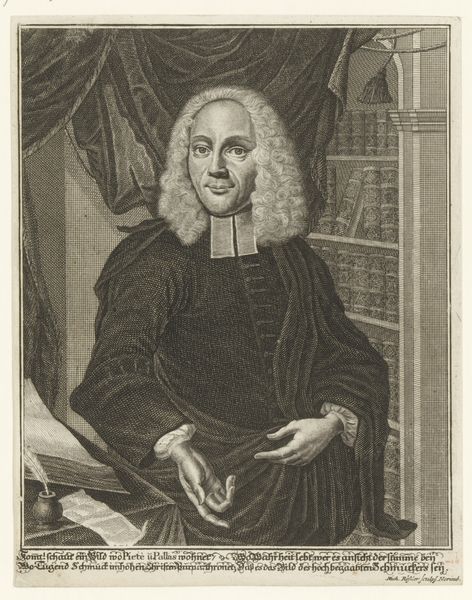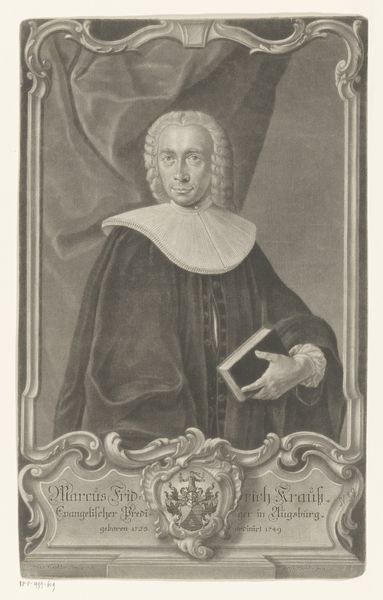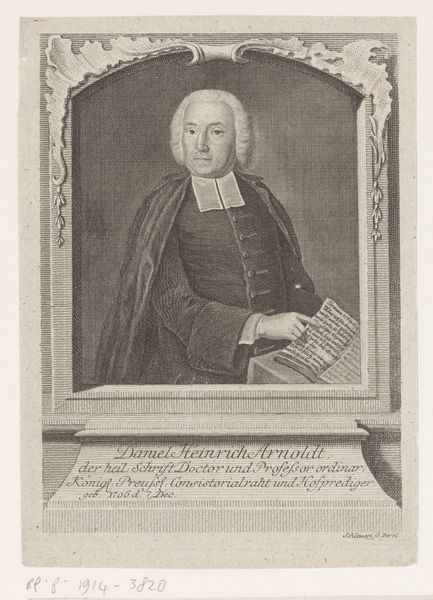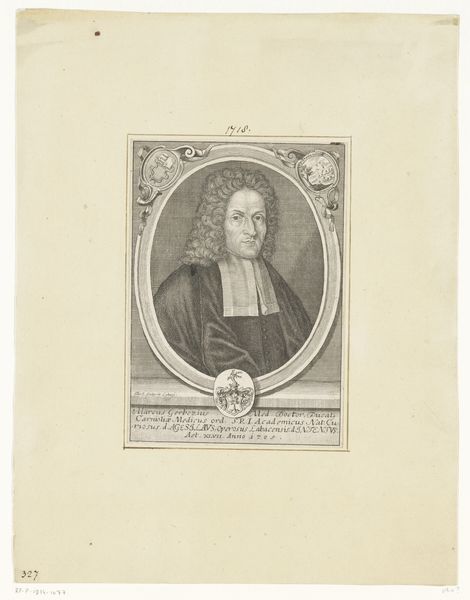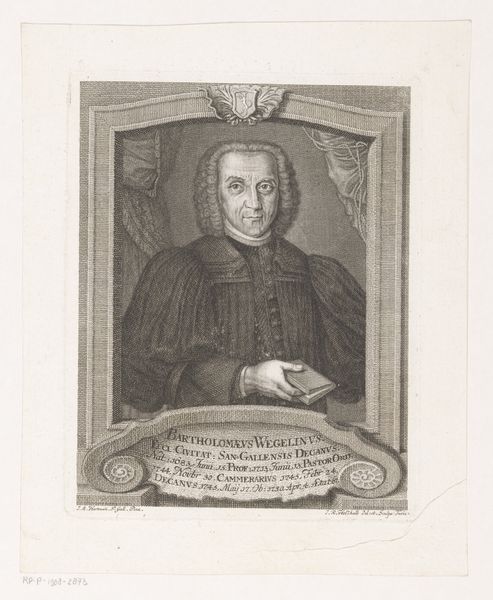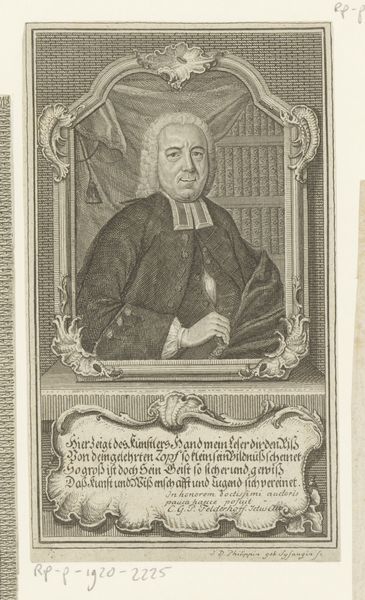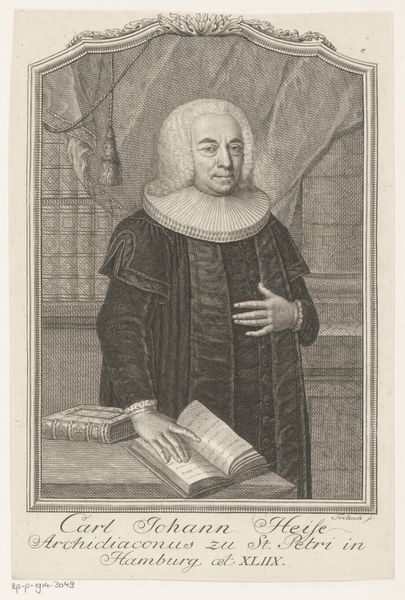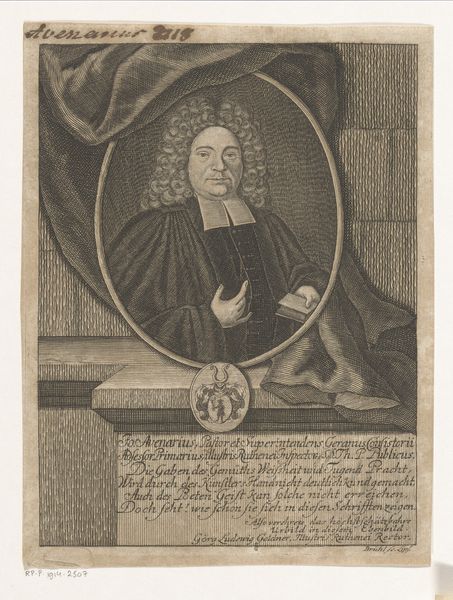
print, engraving
portrait
neoclacissism
old engraving style
historical photography
history-painting
academic-art
engraving
Dimensions: height 330 mm, width 219 mm
Copyright: Rijks Museum: Open Domain
Editor: This is an engraving from 1796 entitled "Portret van Andreas Andriessen." It's currently housed in the Rijksmuseum. It's quite formal, with a lot of detail packed into a fairly small space. What symbolic weight do you think images like these carry for us today? Curator: Portraits such as this, especially engravings, function as a powerful type of cultural memory. Note how Andreas Andriessen is framed, both literally by the ornamental border, and figuratively by the books, chair and drapery behind him. It signifies established authority, a life dedicated to scholarship and perhaps religious conviction given his clerical garb. How does that make you feel? Editor: I guess it seems like the portrait is trying to project an image of respectability and tradition. Is that a fair reading? Curator: Absolutely. Consider the gaze of the subject. While seemingly straightforward, is it confrontational? Reflective? Note the open book beneath his hand and ponder how he carefully positions himself as an academic, with subtle symbolism designed to assure his viewers, of his education and status. What continuity, do you think, this type of image created? Editor: So, it’s about constructing and maintaining a specific kind of identity. The symbolism provides visual reassurance about Andriessen's position and knowledge. I’ll definitely think about the use of imagery more carefully in my studies. Curator: Precisely. And it’s these carefully constructed continuities, repeated and re-interpreted through visual symbols, which shape our understanding of the past. I will never look at engravings the same way again!
Comments
No comments
Be the first to comment and join the conversation on the ultimate creative platform.
